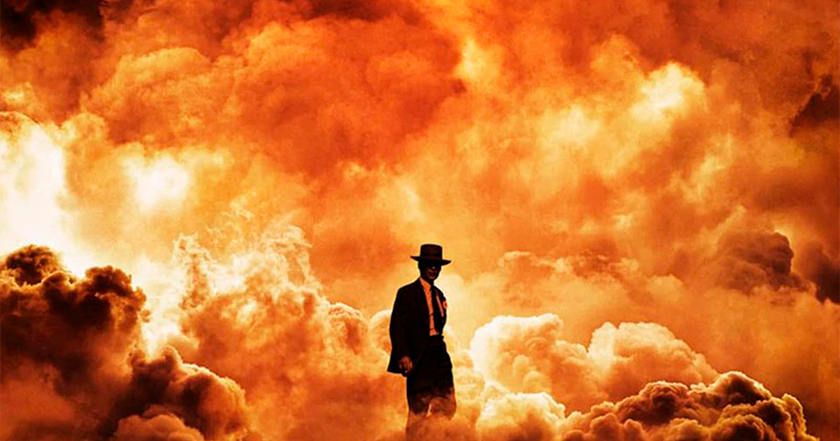By: Amanda Guarragi
J. Robert Oppenheimer was a physicist who changed the world. What started as an attack against the Nazi regime ended in one of the most tragic events for those living in Hiroshima. Oppenheimer was the man of the hour as he directed a group of physicists to create the atomic bomb. In Christopher Nolan’s Oppenheimer, he explores the moral dilemma that consumes Oppenheimer (Cillian Murphy) as he builds the bomb and the aftermath of his decision. Nolan creates layers of tension through two lenses; the objective and the subjective. He explores the difference in ideology between scientists and politicians, which is still relevant today. The juxtaposition between a physicist wanting to help defeat one regime versus a government using the creation without thinking of the consequences is the most horrifying aspect of this film. Nolan creates a sense of dread in the atmosphere with every step Oppenheimer takes to complete his work.
Nolan adapted the novel American Prometheus: The Triumph and Tragedy of J. Robert Oppenheimer, written by Kai Bird and Martin J. Sherman, and it is truly the best script he has ever written. In the opening of this film, he presents two sides; one in colour, labelled Fission, and the other in black and white, labelled Fusion. “Fission” is what Oppenheimer was directly dealing with, and his place in history unravelled. There are conversations with other physicists, government officials and lovers who all have a hand in his closed hearing when renewing his security clearance almost a decade after the events in Hiroshima. “Fusion” explores the aftermath of the bomb detonating and how the head of the AEC (Atomic Energy Commission), Lewis Strauss (Robert Downey Jr.), was at the hearing openly discussing Oppenheimer and his work with him. Nolan shows what Oppenheimer thought of himself and how others viewed him to get the full scope of his impact.
Nolan expertly moves between both perspectives to show Oppenheimer’s internal battle. Introducing both hearings towards the beginning allowed all the pieces to fall into place when paving the journey for his characters. A new character would be added with every new accusation made against Oppenheimer. This allowed audiences to remember the long list of characters because of how they were highlighted. From Benny Safdie to Alden Ehrenreich to Florence Pugh to Rami Malek, everyone played a role in the historical narrative of Oppenheimer. Even though the cast was extensive, Murphy and Downey Jr. gave career-best performances. They went toe-to-toe with each other, and Nolan created such a compelling relationship on screen. The final hour is incredible to watch because both hearings unfold simultaneously. The structure works beautifully because of the simple set-up of one scene between Strauss, Oppenheimer, and Albert Einstein.
Oppenheimer demands to be experienced in IMAX. Not only is it beautifully shot by Hoyte van Hoytema, but the sound design and score (by Ludwig Göransson) elevate the film entirely. Without the score and the echoes of the bomb going off in Oppenheimer’s mind showing his anxiety, the pieces of dialogue and lengthy discussions would not have been as consuming. Several scenes in this film will be etched into your brain long after you’ve watched it. And there are many layers within the dialogue with the exploration of both cases that will garner a second or even third viewing. This is Nolan’s best work to date, and it does feel like a culmination of his filmography. This is a remarkable achievement for Nolan and one of the most important films released in recent years. Oppenheimer held so much power in his hands. And yet, the decision to unleash it was not even up to him.


Good review. Definitely agree with you about this movie. It certainly did feel like it was a culmination of Nolan’s skills as a director. Plus, I felt that the movie certainly lived up to the hype.
LikeLiked by 1 person